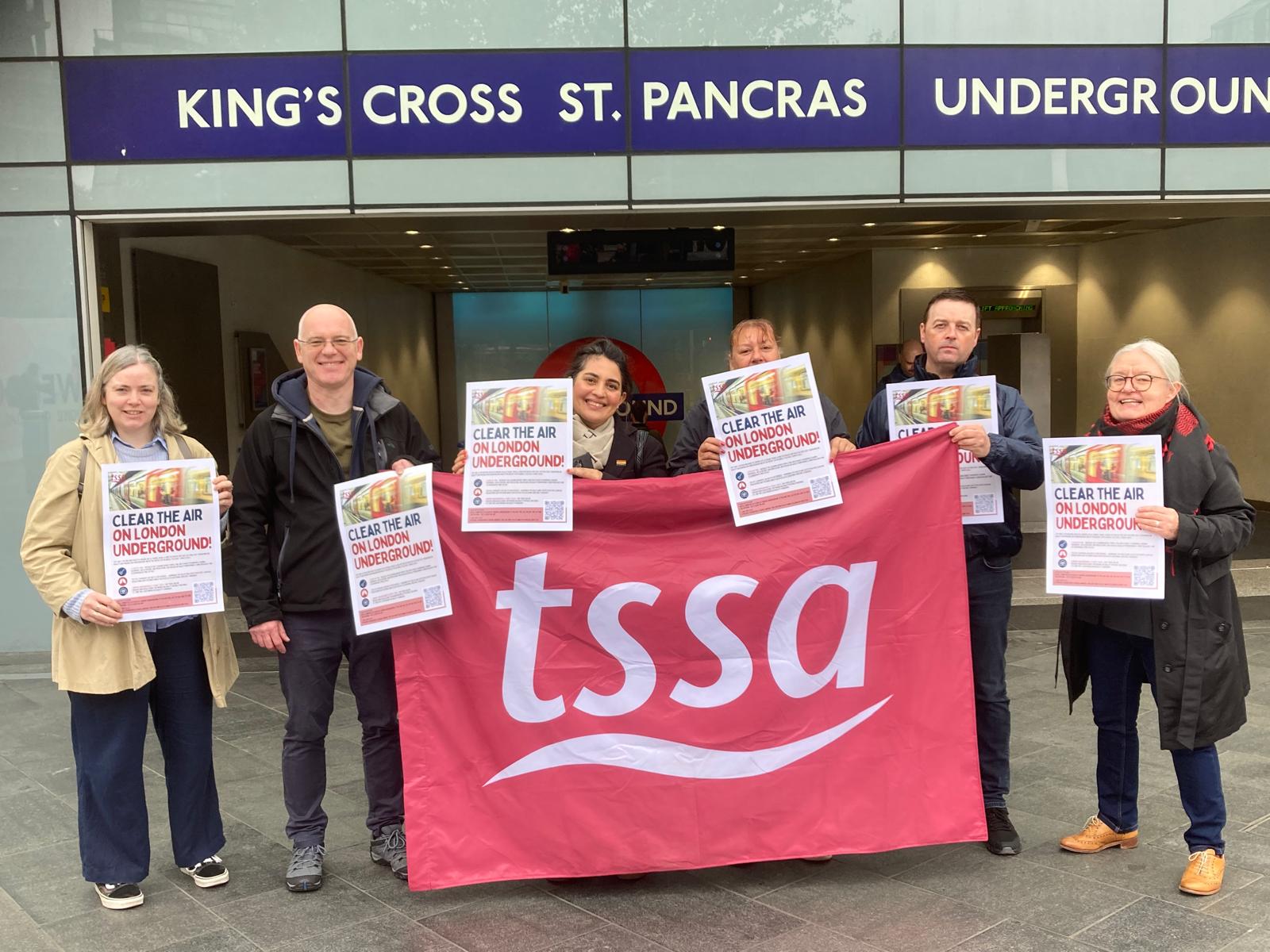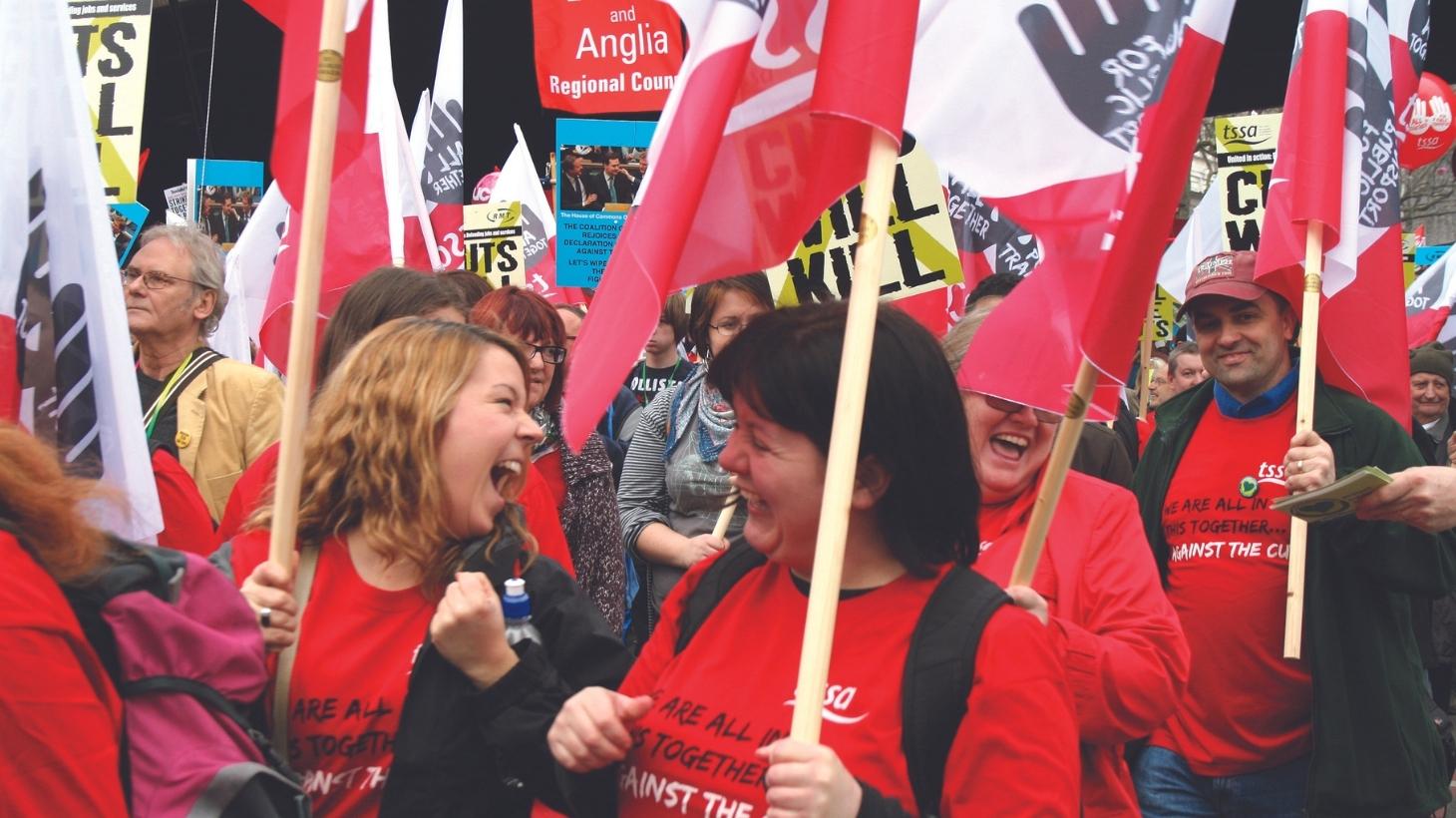NEWS.CATEGORY: Industrial
TSSA launch ‘Clear the Air’ on London Underground campaign

Rail union TSSA has begun a new major new campaign calling for cleaner air on the London Underground - appealing for increased investment including air filtration, ventilation and air quality monitoring.
TSSA is raising awareness of low air quality and high levels of steel particulate matter on the Tube network which are breathed in by both our members and the public each day.
The Underground is a public space, but because it is a workplace it is governed by the Health and Safety Executive (HSE) air quality regulations. TSSA wants the HSE to harmonise their clean air regulations with the more robust Institute of Occupational Medicine standards.
Speaking after the campaign launch at Kings Cross station TSSA General Secretary, Maryam Eslamdoust, said: “Our campaign is vital because poor air quality means that the Underground network in London is now one of the dirtiest in the world.
“The Mayor has rightly made air quality above ground a priority, but so many of us – from people on their commute and children on the way to school, to London Underground workers supporting those vital services – breathe the dust below ground.
“While some progress has been made on this issue, bringing down dust levels and trialling new technology, we need to build on that work and take things further. Our London Underground members have reported being able to taste it in the atmosphere and see it gradually accumulate on surfaces throughout their working day.
“It’s time to act and TSSA’s ‘Clear the Air’ campaign is calling for a concerted push to clean up London Underground – tackling the dust and raising air quality standards in workplaces and public spaces.”
Campaign briefing - can be found here
Background to the campaign:
*London Underground has been named the dirtiest metro system in the world.
• The air quality issues arise from the steel particulate matter kicked up by trains as they move along the track, especially as they brake.
• Not all tube lines are affected equally – for instance, the Victoria, Central and Northern lines are amongst the worst affected.
• Measuring the health effects of particulate matter is difficult, and establishing a causal link between symptoms and poor air quality can be hard, especially because the nature of the particulate matter on the Underground is different to that on the surface. However, it is widely established that excessive exposure to dust – especially smaller respirable particulate matter which can get into the blood stream (PM2.5) – is dangerous.
• If not causation, there has been some correlation found between sickness absences and workers exposure to PM2.5 on the tube, especially for drivers and customer service staff.
• The Control of Substances Hazardous to Health Regulations (2002) Act sets acceptable levels of exposure to particulate matter in the workplace. These regulations are enforced by the Health and Safety Executive (HSE).
• According to the HSE, acceptable levels for inhalable and respirable forms of particulate matter are 10 and 4 mg/m³ respectively.
• London Underground is a workplace, but it is also a public space. While there are clean air standards for the outdoors, there are no similar overarching indoor air quality regulations for public spaces outside of the HSE standards or building construction regulations.
How dirty is the air on the tube?
• TfL acknowledge that there is a need to reduce dust on London Underground .
• Currently, under current air quality monitoring regimes, air quality on the tube has been found to comply with HSE standards. However, the Institute for Occupational Medicine (IOM) has said that these standards ‘are unsafe and it would be prudent to reduce exposures as far below these limits as is reasonably practicable’, instead recommending 5 and 1 mg/m³ for inhalable and respirable particulate matter, respectively.
• HSE regulations also fall well below World Health Organisation standards.
• Some tube lines have also been found to be IOM compliant, which is positive, but there is still much work to do.
• For instance, academics at Kings College found concentrations of PM2.5 to be worse than metros in Beijing, Guangzhou, Los Angeles, Mexico, New York, Seoul, Taipei, Sydney, and Barcelona.
• Of the tube’s £61.5m cleaning budgetxi, £2m (3% of the budget) is given over to tackling dust.
• In recent meetings with TfL, TSSA reps were informed that there are only 2 teams of 8 people – 16 people in total – responsible for cleaning the tube with vacuum cleaners. Between them they are able only to clean 140-200km of the tube’s 402km of track per year. TfL are exploring the trial of a cleaning train which could clean the entire network in a year.
• Trials of ventilators will begin in December, though we understand there is now currently only budget to purchase 10.
• While TfL carries out some monitoring at stations, it happens annually for 4-hour periods. Monitoring equipment is costly and requires highly skilled researchers to operate, making more robust monitoring prohibitively expensive. There are no low-cost monitors for an underground environment.
At London Underground - TSSA has members across managerial and technical staff and a wide range of operations as well as an active group of LU union reps.
TSSA represents clerical and management grades in Head Office locations, as well as Station operation including Customer Service Assistants, Station Assistants, Customer Service Supervisors, Station Assistant Multi Functional, Revenue Control Inspectors and Customer Service Managers, Station Supervisors, Duty Station Managers and Group Station Managers.

